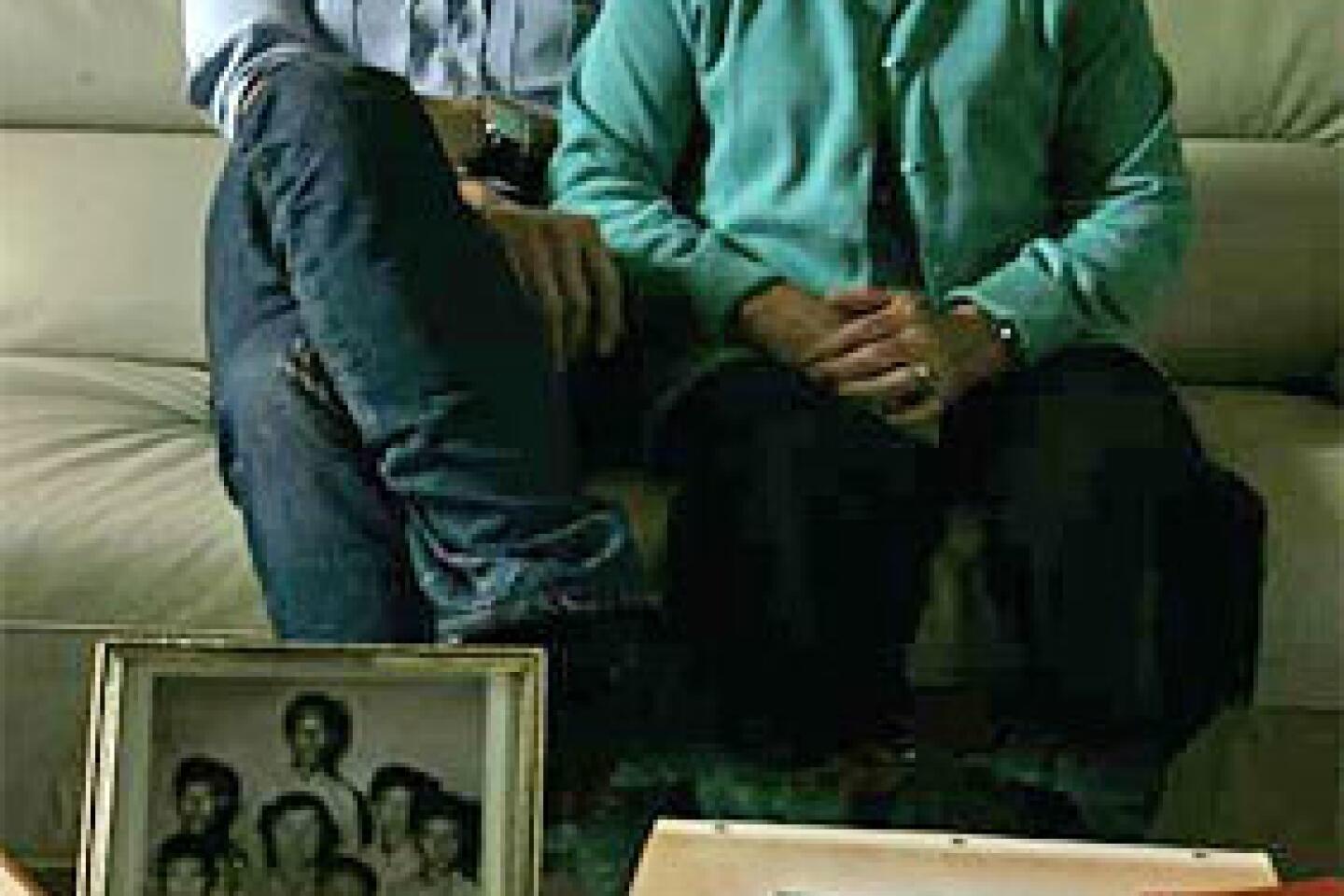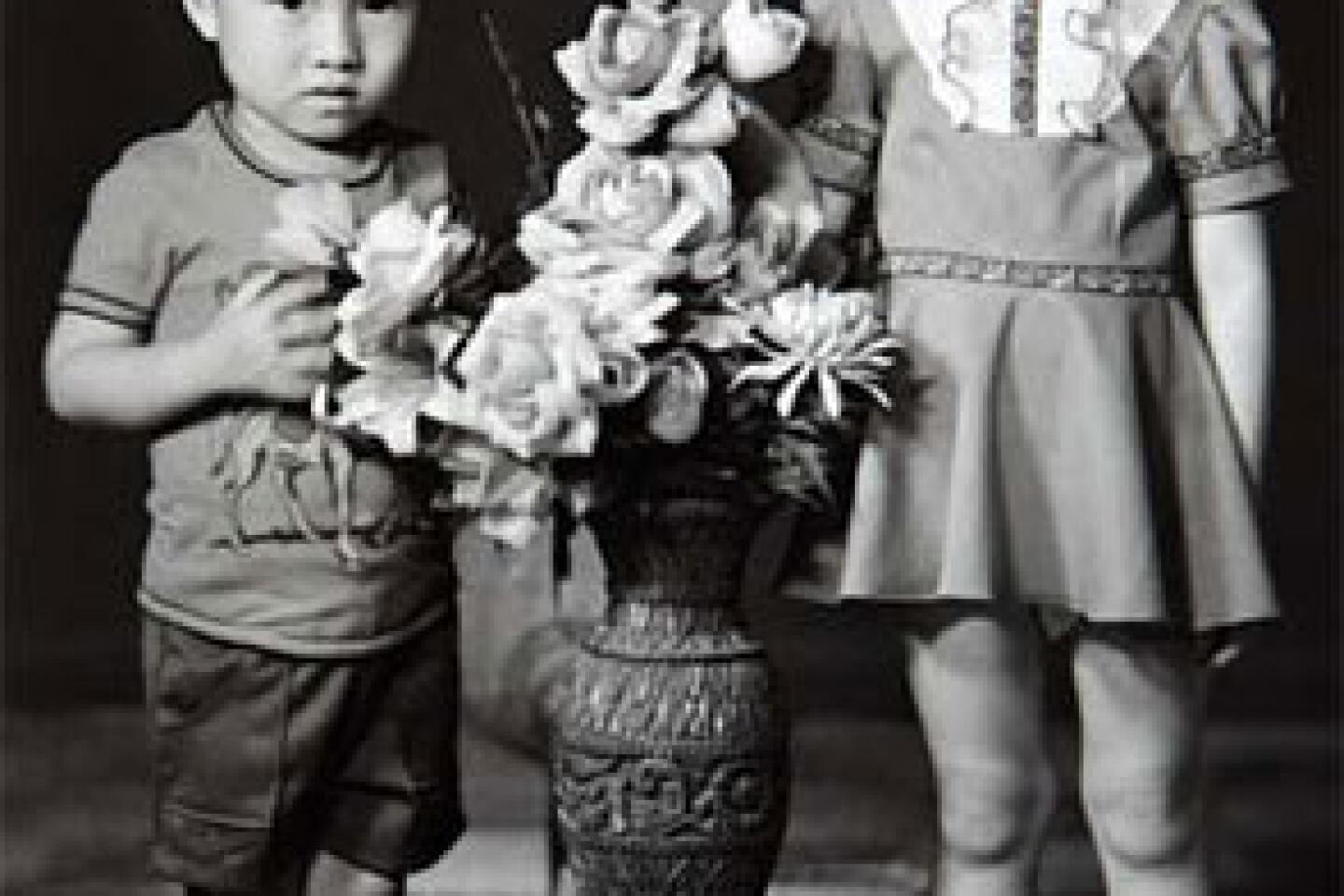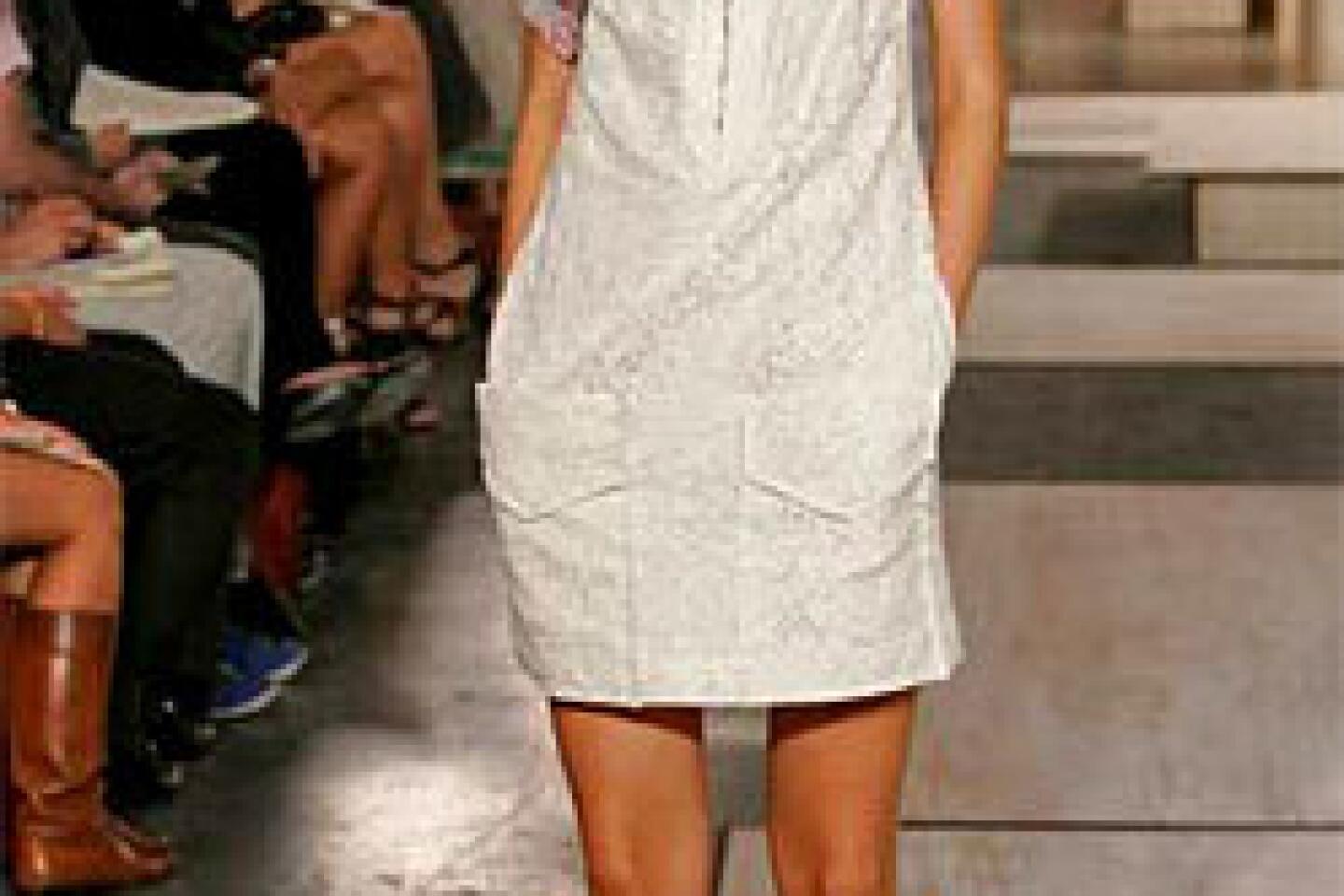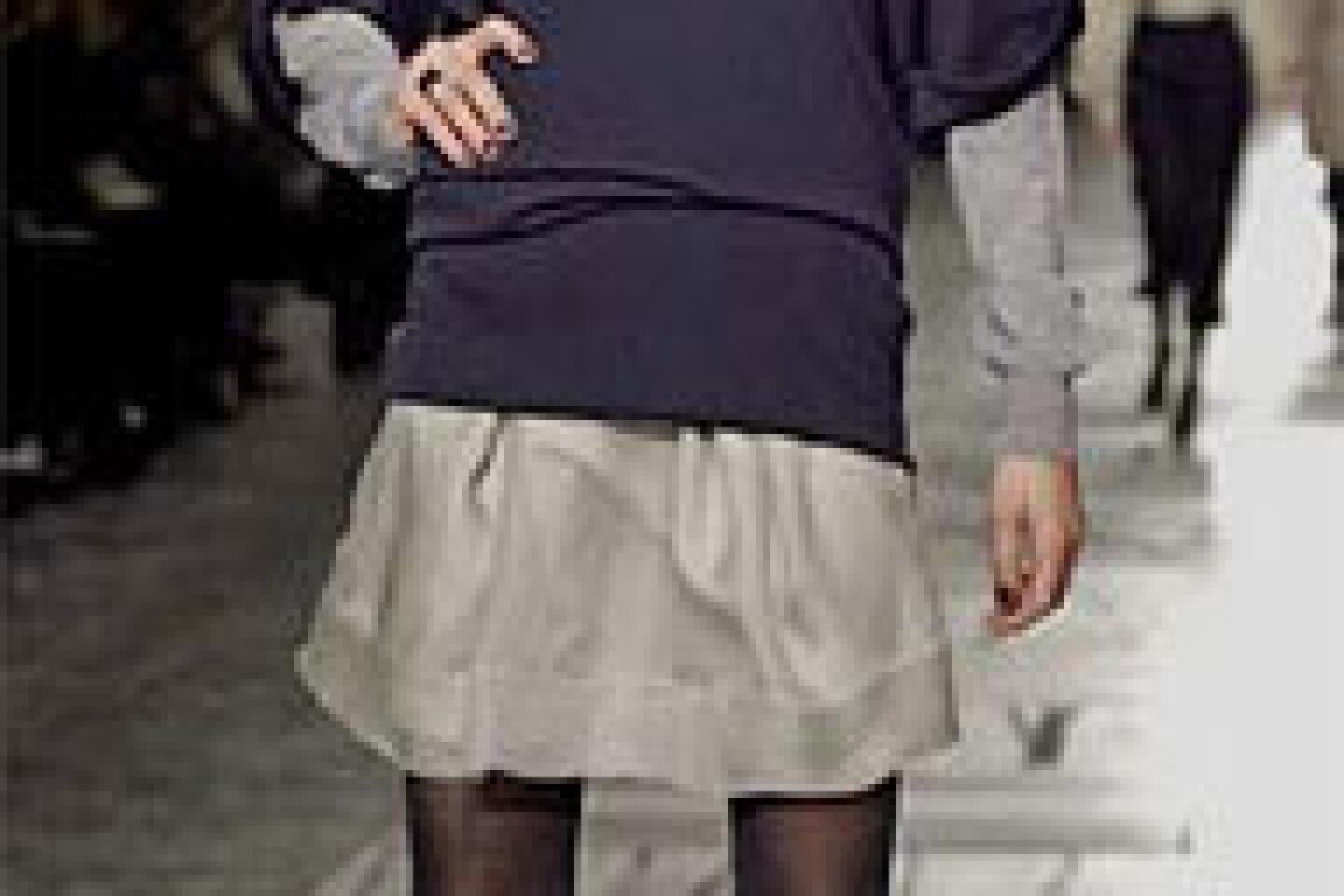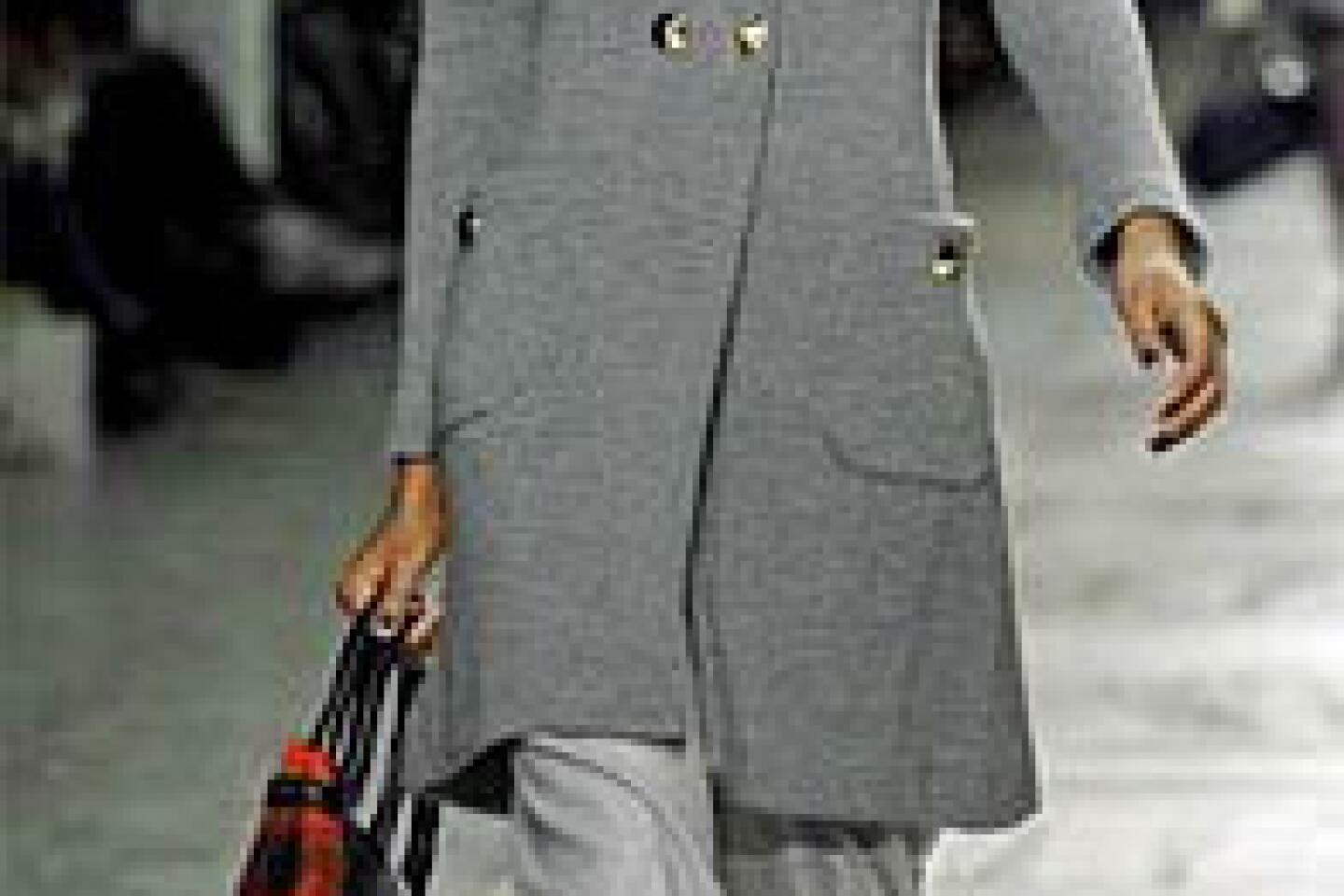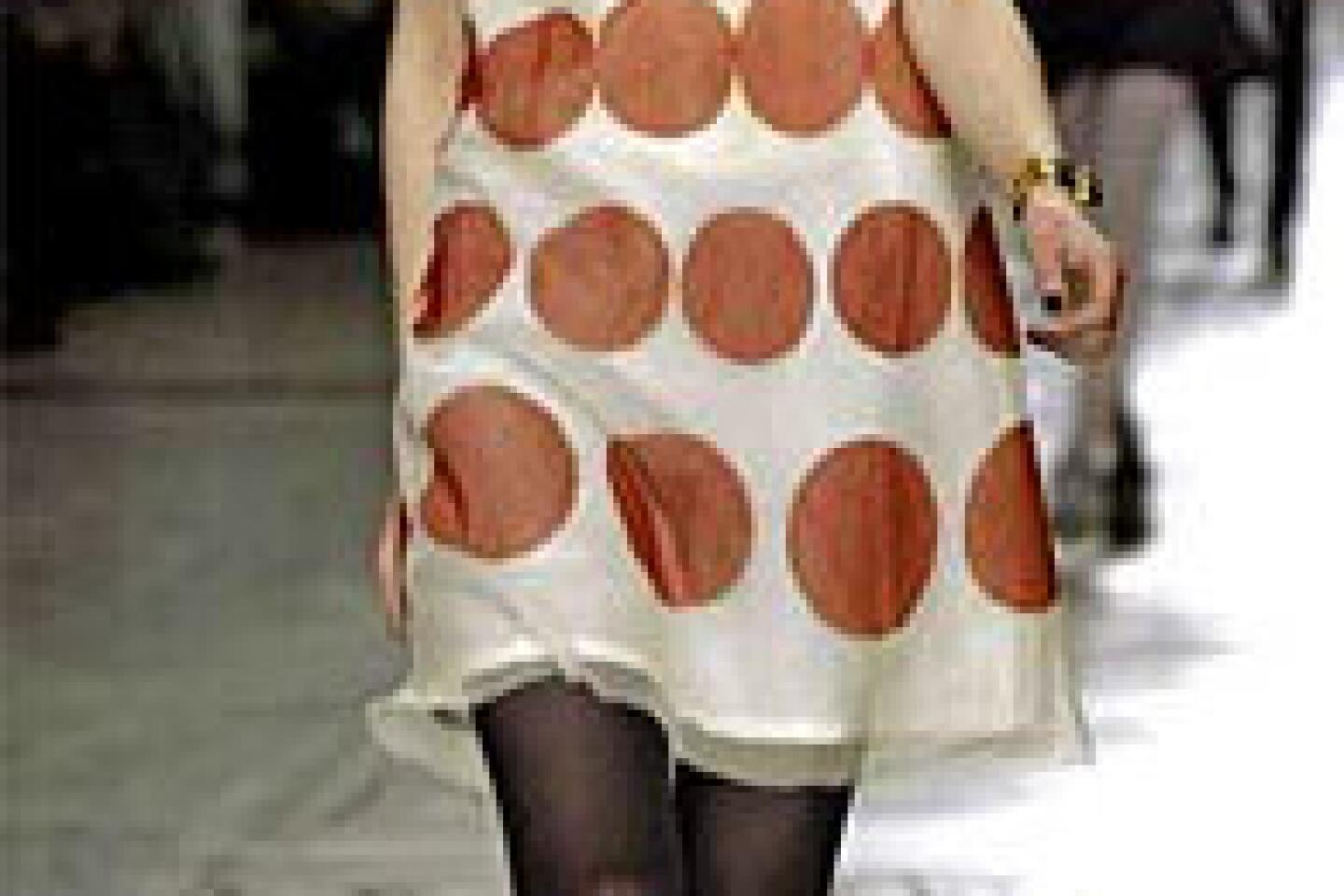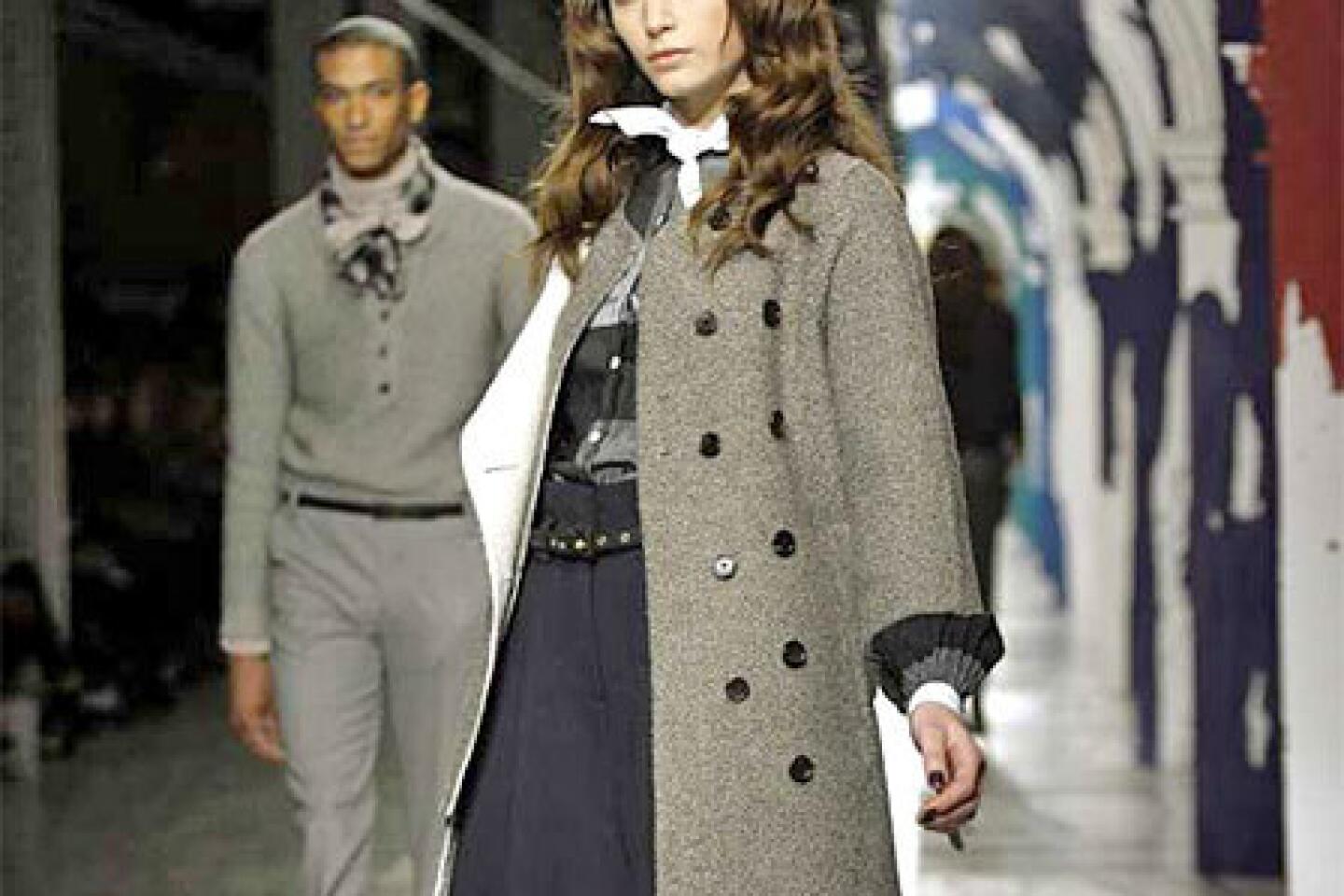White hot in his world
IT’S the dress of the spring season: Look No. 2 from Phillip Lim’s runway show. White dresses were everywhere during the collections last September, but this one — a simple T-shirt style with clusters of hand-sculpted rosettes, a bargain at $510 — spawned waiting lists and secured Lim’s status as New York’s newest fashion star.
After just two years in business, Lim’s women’s, men’s and accessories collections are sold in 250 stores worldwide, including, come July, his own boutique in SoHo. He’s been nominated for an award from the Council of Fashion Designers of America, has a slew of celebrity fans (Natalie Portman, Michelle Williams, Amanda Peet), and Vogue won’t stop calling.
FOR THE RECORD:
Fashion designer: An article on designer Phillip Lim in the May 6 Image section said a popular white dress with handmade rosettes was from Lim’s spring collection. Designer Koi Suwannagate collaborated with Lim on the dress. —
His romantic style has been influenced by everything from the perennial fashion film “Grey Gardens,” about the decaying socialite Edith Bouvier Beale, to the elegance of a rosebud, but always with the kind of dressmaker details more typically associated with high-fashion designers such as Alber Elbaz for Lanvin.
So it might be surprising to hear that Lim actually grew up in Orange County — not the over-privileged “OC,” but the working-class town of Westminster, where his family moved from Cambodia and where his mother Hannah still lives.
Lim lives and works in New York now, but visits his mother often, most recently last month when we caught up with them. His old bedroom has been converted into a storage space, but from the stack of fashion magazines spilled on the floor next to the couch, you can tell he still bunks there.
Lim has never invited his mom — or any of his family — to his runway shows. Or told them how much his clothes cost. (His line falls in the contemporary category, so most pieces are less than $1,000.) His mother only recently learned that his work has been featured in magazines when a French relative phoned her after seeing his name in Jalouse.
An understanding
LIKE so many immigrant children who don’t go into professional fields, Lim thinks he’s disappointed his parents, for whom going into fashion was on par with becoming a small-time seamstress. He’s not estranged from his mom, but they have a mutual understanding. He lives his life in New York, she sends him her famous garlic sauce, and they rarely, if ever, discuss work. But it could be the intersection of her make-do mentality and his more sophisticated, city-wise aesthetic that has made his collection such a hit.“Vogue magazine doesn’t mean anything to her,” Lim says. “She doesn’t know who Anna Wintour is or what Barneys is. She doesn’t know that it’s all about the little white dress.”
The truth is, Asian designers are making an impact on fashion the likes of which we haven’t seen since the 1980s, when Yohji Yamamoto, Issey Miyake and Rei Kawakubo first landed in Paris from Japan. Except that this second wave is Asian American. Derek Lam, the new creative director for Italian luxury goods brand Tods, was born in Hong Kong and raised in San Francisco, where he first learned about clothing at his grandparents’ bridal wear factory. Doo Ri Chung, who emigrated from South Korea when she was 4 years old and started designing out of her parents’ dry-cleaning shop, won the CFDA/Vogue Fashion Fund Award in November and has designed a special collection of white shirts in Gap stores nationwide now. Thakoon Panichgul, of Thai descent, Peter Som, of Chinese descent, and Richard Chai, of Korean descent, are also turning out consistently strong collections on New York runways.
Still, working in fashion, or more specifically sewing clothes, was not the life Hannah wanted for her son.
Even now, more than 30 years later, she tears up talking about the summer of 1975 when she and her late husband Pary escaped from Cambodia in the middle of the night, huddled in a boat with their six children who were all under the age of 13. The Lims are Chinese, but their ancestors migrated to Cambodia after Japan invaded. When Pol Pot took over, “I was afraid he was going to draft my boys as children soldiers,” Hannah says, as her daughter Lisa translates. They escaped to a refugee camp in Thailand, where a Christian organization sponsored their move to San Diego. Pary worked odd jobs while Hannah sewed simple garments at home for 5 to 10 cents apiece.
Luxury and necessity
“TO her, clothing was to protect and cover the body and put food on the table,” Phillip Lim says. “It was never about a fantasy where you can get dolled up and change your personality. It wasn’t a luxury; it was a necessity.”A few years later, the family moved to Westminster, and Hannah began working in a garment factory.
“She would work 10-hour days, cook dinner for us, then go to the sewing machine she saved up money to buy and sew until she fell asleep on the machine,” Lim remembers. “Looking at my work now with the tedious hand stitching, I remember it from the clothes she was making. Somehow it comes through, the respect for the people who put it together.”
Mom and dad always dressed conservatively. Even today, Hannah wears a green twin set and black slacks from Target, along with Tiffany pearls, a birthday gift from Lim.
Not that Lim’s collections are that wild. The trapeze dresses with lattice collars, tiered organza blouses and high-waist trousers from the all-white spring collection were demure with a twist, as were the shadow tartan skirts and bow-front blouses he showed for fall. You could almost see his mom wearing them, if it wasn’t for the prices.
“To her, why would you pay $800 for a suit if you can make it for less?” Lim says. “That’s money you could send back to your relatives, and they could live for a year.”
The family goal was for every child to go to college and, eventually, become a doctor or a lawyer.
“I was afraid of blood — that was my excuse to go into business,” Lim says. It didn’t take. Not long after arriving at Cal State Long Beach, he switched majors to study fashion merchandising.
“My heart broke,” Hannah, 67, says. “I couldn’t believe we sent him to school to do that.”
When Phillip graduated in 1997, he didn’t invite his parents to the ceremony. “I had a degree, but it wasn’t in what they wanted.”
He moved to Los Angeles to be a design assistant for Katyone Adeli. “I just told them I was working. I never told them where or on what because if it hadn’t worked out, they would have said ‘I told you so.’ ”
He launched the clothing label Development with a few friends and received six figures worth of orders the first season. When Lim left in 2004, he was unemployed for only a few hours before his current business partner, Wen Zhou, bought him a plane ticket to New York. “I told my mom I was moving on Tuesday and left on Thursday.”
They named the business 3.1 because they were both 31 years old at the time. And now, it’s a $30-million company.
In the realm of runway fashion, his clothes are not expensive. And he plans to keep it that way, even as his profile rises.
“Price is important to me,” he says. “It’s all about where I come from. I’m in a privileged profession now, but I hate the feeling of being spoiled. They are just clothes. They should make you feel good and look good, and I hope you can still pay your bills after you buy them.” He decided the best way he could prove himself to his mom was through his actions. So now that he has his own factory, showroom and soon his own store, he may be ready for her.
*
ON THE RUNWAY
Gallery: A look at Phillip Lim’s collections for spring and fall 2007, at latimes.com/image.
